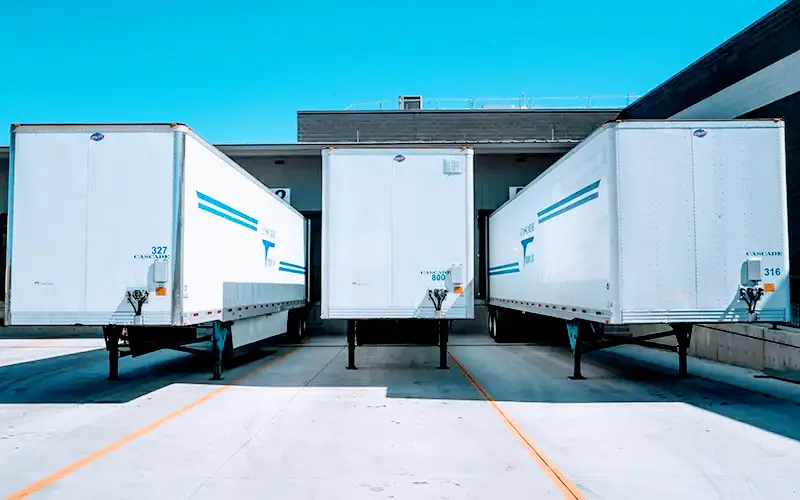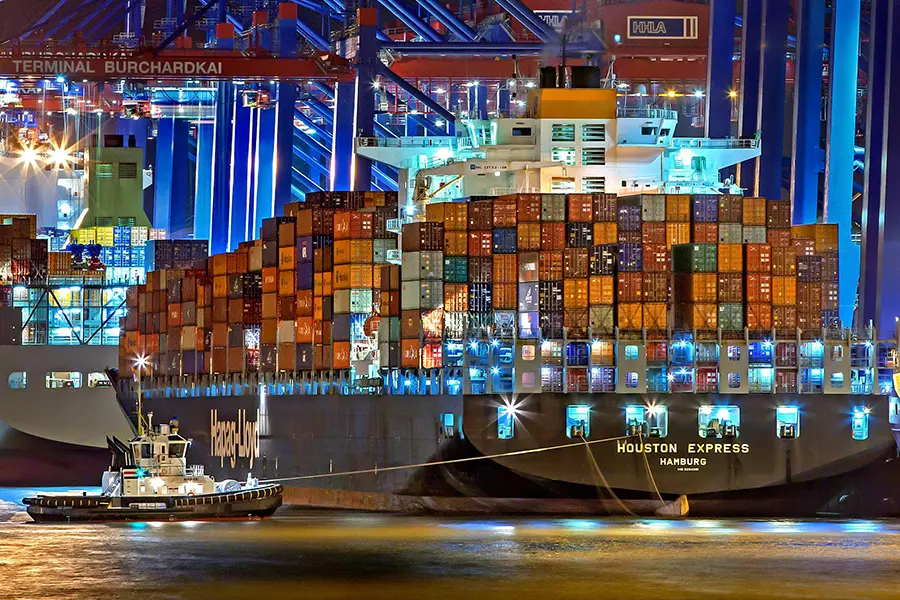
The world of logistics is always bustling. According to Averitt.com, 67% of shippers anticipate moving more freight in 2024 than 2023. Making sure shipments don’t skip a beat is more important than ever. That’s where modern terminal operations come in.
Terminal operations serve as critical hubs where goods are received, processed, and dispatched for onward delivery. The optimization of terminal operations is paramount for companies seeking to enhance efficiency, minimize costs, and meet the demands of an increasingly competitive marketplace. In this article, we’ll explore the challenges associated with terminal operations and present strategies to optimize these vital processes for greater success.
What are Terminal Operations?
Terminal operations encompass a broad range of activities, including cargo handling, storage, sorting, and transportation coordination, typically occurring at ports, airports, distribution centers, and transportation terminals. These operations play a pivotal role in facilitating the movement of goods from suppliers to end customers, serving as pivotal nodes in global supply chains.
What is a Terminal Operations System?
A Terminal Operating System (TOS) is a specialized software application designed to manage and optimize operations within marine terminals, also known as container terminals or ports. TOS is a comprehensive solution that automates and streamlines various aspects of terminal operations, including vessel planning, berth management, yard planning, container handling, gate operations, and inventory management.
The Challenges of Terminal Operations
Terminal operations pose a myriad of challenges due to their complex and dynamic nature within the global supply chain. From seaports and airports to distribution centers and rail terminals, these critical nodes serve as pivotal hubs for the movement of goods, necessitating efficient and seamless operations. However, challenges such as congestion, limited infrastructure capacity, unpredictable demand fluctuations, safety concerns, and regulatory compliance requirements can significantly impact terminal efficiency and productivity.
Additionally, the need to balance competing priorities, optimize resource allocation, and leverage technology amidst evolving industry trends further complicates terminal operations management. Addressing these challenges requires innovative strategies, advanced technologies, and collaborative approaches to enhance operational agility, mitigate risks, and drive sustainable growth in today’s competitive marketplace. Here’s a shortlist of the top challenges facing shippers at the point of handling and moving inventory.
- Complexity and Scale: Terminal operations involve managing large volumes of goods and coordinating multiple stakeholders, including carriers, suppliers, customs authorities, and regulatory agencies. The sheer complexity and scale of terminal operations can pose significant challenges in terms of coordination, resource allocation, and process optimization.
- Congestion and Delays: Terminals often face congestion due to the influx of goods, limited infrastructure capacity, and unpredictable demand fluctuations. Congestion can lead to delays in cargo handling, increased turnaround times, and reduced throughput, negatively impacting operational efficiency and customer satisfaction.
- Safety and Security Concerns: Terminal operations are susceptible to safety hazards, security threats, and compliance risks, ranging from accidents and injuries to theft, vandalism, and terrorism. Ensuring the safety of personnel, equipment, and cargo, while maintaining compliance with regulatory requirements, is a constant challenge for terminal operators.
- Resource Utilization and Optimization: Effective resource utilization is essential for maximizing terminal efficiency and minimizing costs. However, achieving optimal resource allocation, including labor, equipment, and storage space, requires sophisticated planning, scheduling, and coordination mechanisms to balance capacity and demand fluctuations.
- Technology Integration and Automation: The integration of technology and automation solutions is critical for enhancing terminal operations efficiency. However, implementing and integrating these technologies, such as RFID, IoT, AI, and robotics, presents challenges related to infrastructure investment, interoperability, and workforce readiness.

Strategies for Terminal Operations Optimization
Strategizing terminal operations is of paramount importance as it lays the foundation for efficient and effective management of critical logistical processes within terminals. By developing comprehensive strategies, terminals can minimize costs, streamline processes, and adapt to changing market dynamics, ensuring they remain competitive and responsive to customer needs.
- Data-Driven Decision Making: Harness the power of data analytics and real-time monitoring systems to gain insights into terminal operations performance, identify bottlenecks, and make informed decisions. Analyze key performance indicators (KPIs) such as throughput, turnaround times, and equipment utilization to optimize processes and resource allocation.
- Process Standardization and Automation: Standardize terminal operating procedures and implement automation solutions to streamline repetitive tasks, minimize manual intervention, and reduce errors. Automation technologies, such as automated stacking cranes, conveyor systems, and robotic palletizers, can significantly improve efficiency and throughput.
- Capacity Planning and Expansion: Conduct thorough capacity planning assessments to anticipate future demand growth and ensure that terminal infrastructure and resources can accommodate projected volumes. Invest in infrastructure upgrades, expansion projects, and technology enhancements to increase capacity and alleviate congestion.
- Collaborative Planning and Coordination: Foster collaboration and communication among terminal stakeholders, including carriers, shippers, customs authorities, and regulatory agencies, to streamline operations and minimize disruptions. Implement collaborative planning tools, such as supply chain visibility platforms and collaborative scheduling systems, to facilitate real-time information sharing and decision-making.
- Safety and Security Measures: Prioritize safety and security initiatives to protect personnel, assets, and cargo within terminal facilities. Implement robust safety protocols, training programs, and equipment maintenance practices to mitigate risks and ensure compliance with regulatory requirements. Deploy advanced security technologies, such as surveillance cameras, access control systems, and cargo screening technologies, to enhance terminal security and deter unauthorized activities.
- Continuous Improvement Culture: Cultivate a culture of continuous improvement within terminal operations by encouraging employee involvement, soliciting feedback, and implementing process improvement initiatives. Establish cross-functional improvement teams, conduct regular performance reviews, and celebrate successes to foster a culture of innovation and excellence.
Using RFID for Terminal Operations
RFID technology offers immense potential for optimizing terminal operations across various industries, including seaports, airports, distribution centers, and rail terminals. By leveraging RFID for terminal operations optimization, organizations can enhance efficiency, accuracy, and visibility throughout the supply chain, thereby improving overall operational performance and customer satisfaction.
One key area where RFID can significantly benefit terminal operations is in asset tracking and management. By affixing RFID tags to containers, equipment, and other assets, terminals can achieve real-time visibility into their location, status, and movement. This enables more efficient yard management, as RFID-enabled systems can automate the tracking and retrieval of containers, reducing the time and labor required for manual inspections and searches. Additionally, RFID can help prevent loss and theft of assets by providing instant alerts if an asset moves outside designated areas or unauthorized zones.
Furthermore, RFID technology can streamline the gate operations process at terminals, improving the flow of trucks and containers in and out of the facility. RFID-enabled gate systems can automatically identify and authenticate vehicles and containers as they enter the terminal, reducing wait times and congestion at the gates. This not only improves operational efficiency but also enhances security by ensuring that only authorized vehicles and cargo gain access to the facility.
Conclusion
Overall, RFID technology offers a wide range of benefits for optimizing terminal operations, including enhanced asset tracking, streamlined gate operations, and improved inventory management. By leveraging RFID-enabled solutions, terminals can achieve greater efficiency, accuracy, and visibility throughout the supply chain, ultimately driving operational excellence and competitive advantage in today’s dynamic business environment.
Terminal operations optimization is essential for companies seeking to maintain a competitive edge in today’s dynamic business environment. By addressing the challenges associated with complexity, congestion, safety, and resource utilization, organizations can unlock efficiency gains, improve customer satisfaction, and drive sustainable growth. By embracing data-driven decision-making, process standardization, collaboration, and continuous improvement, companies can transform their terminal operations into strategic assets that fuel success in the global marketplace.
Interested in RFID?
An RFID tracking system can help organizations of all sizes improve their supply chain efficiency. Contact the CYBRA team schedule a demo today.




